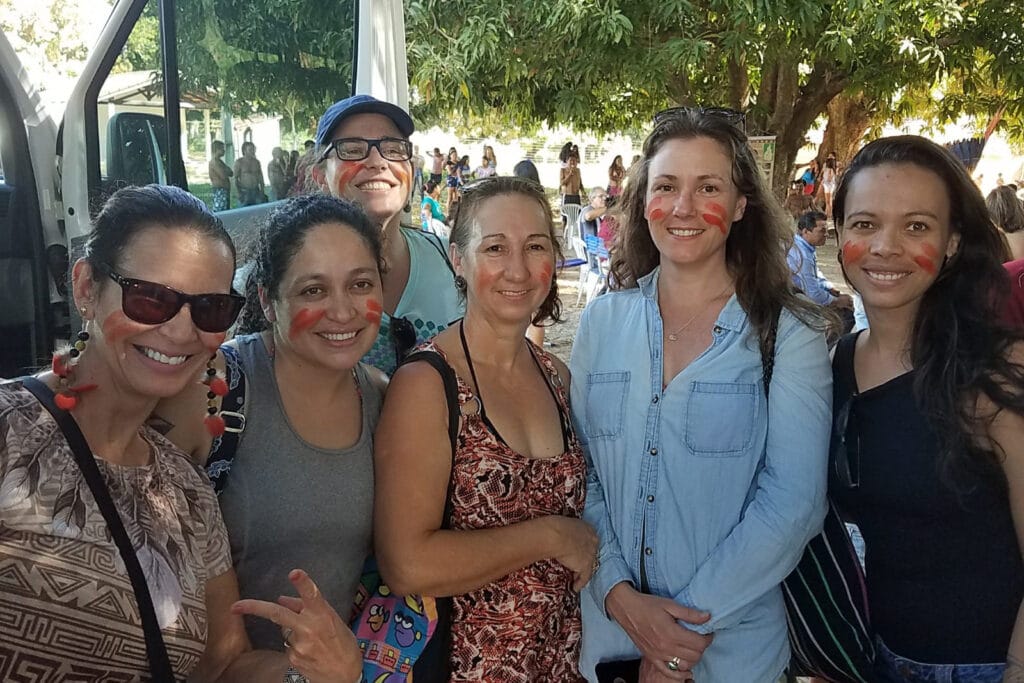A water resource geographer in NAU’s School of Earth and Sustainability is a co-author of two chapters in a Portuguese-English book about the ecological and cultural importance of dams in two major river ecosystems in the United States and Latin America.
Assistant professor Denielle Perry contributed to “Rios, Terras e Culturas: Aprendendo com o Sistema Socioecológico do Tocantins” (“Rivers, lands and cultures: Learning from the Tocantins Social-ecological System”). The book is a collection of papers that draw on presentations the researchers have given on field trips they’ve taken and workshops held at the Amazon Dams Network (ADN) meeting in Tocantins, Brazil, in 2018. Perry, who is a member of ADN, investigates the historic and contemporary drivers of dam developments and the impact of dams on river communities, particularly Indigenous communities.
ADN was formed by NAU affiliates Ted Melis and Lucas Bair, who also are co-authors on Perry’s chapter. The organization’s goal is to share experiences between the Colorado River Basin and the Amazon Basin.
“With nearly 100 years of major dam developments in the Colorado, there are a lot of lessons to be shared—both in ways that work to incorporate Indigenous perspectives in the adaptive management of the river system, and those tough reminders of how dam development has negatively impacted riverine communities and the ecosystem,” she said. “The hope is that in sharing these lessons with colleagues in the Amazon Basin, there is a chance to mitigate or avoid some of the socioecological degradation that comes with dam development.”
Dams are a thorny addition to an ecosystem. There are a lot of negative effects associated with dam production, including displacing riverside communities, fracturing migration corridors for wildlife, changing the streamflow and degrading water quality, all of which can put endangered species at further risk or endanger other species. Damming a river can fundamentally change the entire ecosystem around it. With many rivers, including the Colorado and the Amazon, dams also can destroy or alter sacred spaces for Indigenous peoples.
Dams, however, have become part of rivers and a way to offer renewable, cheaper electricity, so the ADN is asking how to adaptively manage these ecosystems to mimic a natural flow or whether dams should be removed to restore the original ecosystem.
The process tends to play out the same in each situation; large corporations and Western society get the benefits of dam construction and cheap electricity, while river-dependent Indigenous communities typically aren’t consulted or, if they are, their voices are not taken into account when decisions are made. Those same communities bear the brunt of the negative effects of the dam.
“When dams go up, whole communities are often displaced without compensation, their sacred sites and waters are covered or compromised, and fish they’ve relied on for millennia to subsist dwindle while fertile soils are inundated, driving a dependence on purchasing food with money they often don’t have,” she said. “They suffer from outsiders entering their villages, bringing disease, drugs and empty promises while exposing them to consumer culture. All of these impacts threaten Indigenous cultural renewal. Such encounters can help social and natural scientists convey the need for fundamental changes in how the integrated socioecological riverine ecosystems are affected strategies and alternative strategies for water resource management.”
Facilitating more productive conversations between the various stakeholders can strengthen efforts to advocate for changes in economic policies that facilitate dam development and changes in dam operations. The Colorado River is a good example to consider the effects of development, as it has 45 dams to bank and deliver water to holders of water rights, and it flows through seven states and two countries, making the governance of it complex. The Colorado River Basin is much smaller than the Amazon Basin, but the Brazilian government is engaging in similar colonizing behavior as did the American government during westward expansion.
Heidi Toth | NAU Communications
(928) 523-8737 | heidi.toth@nau.edu




